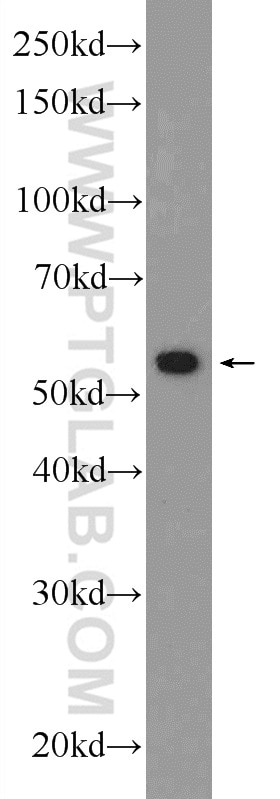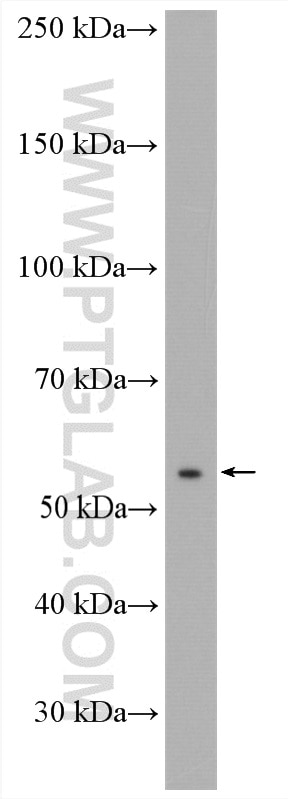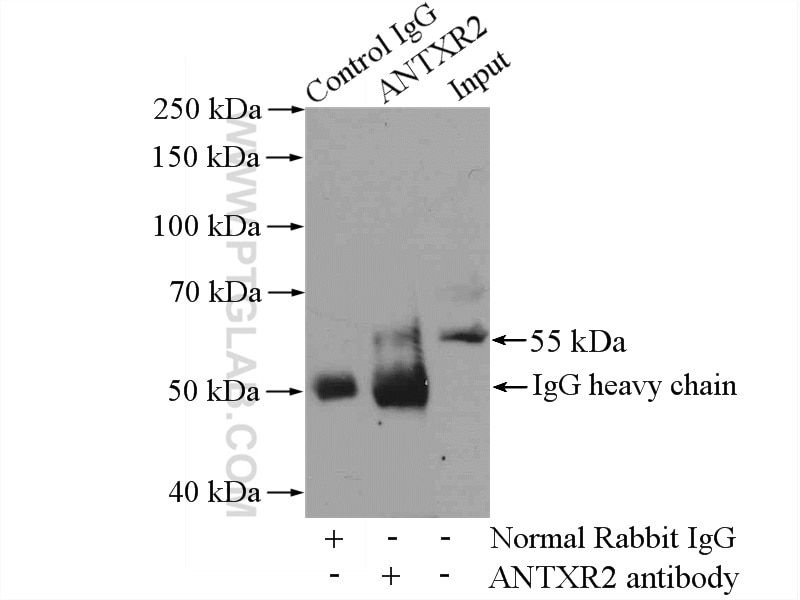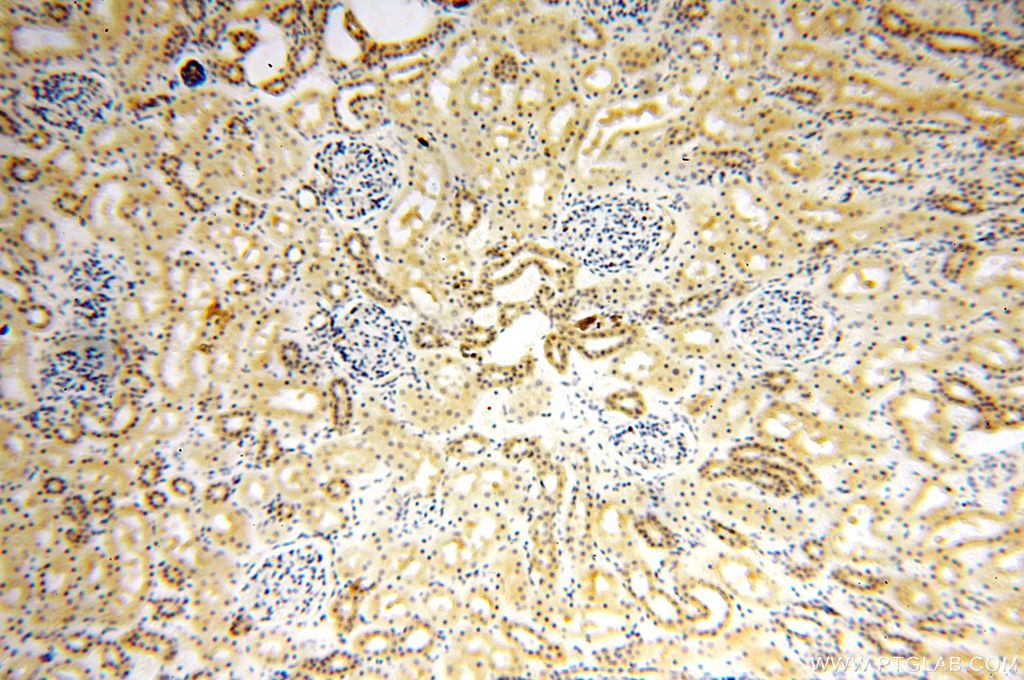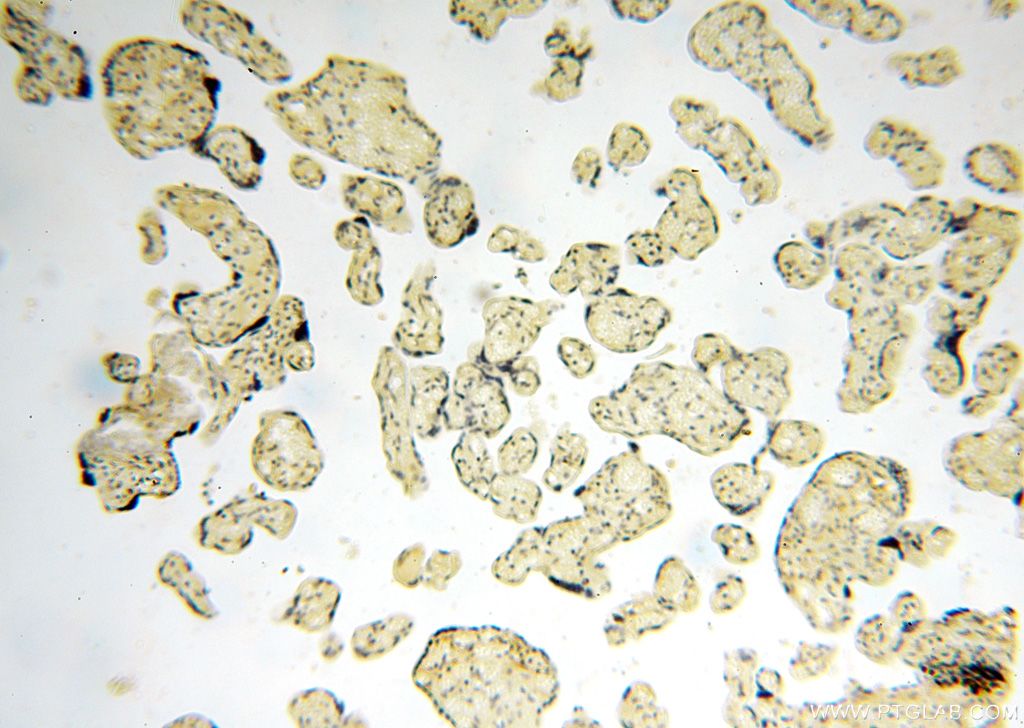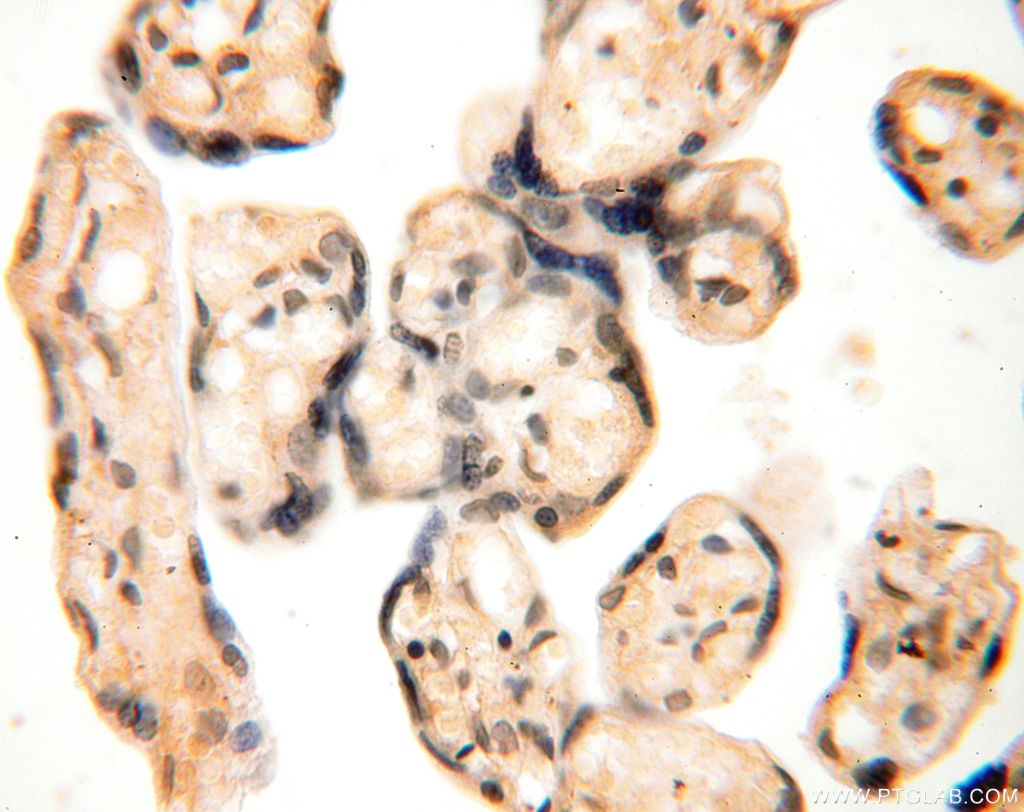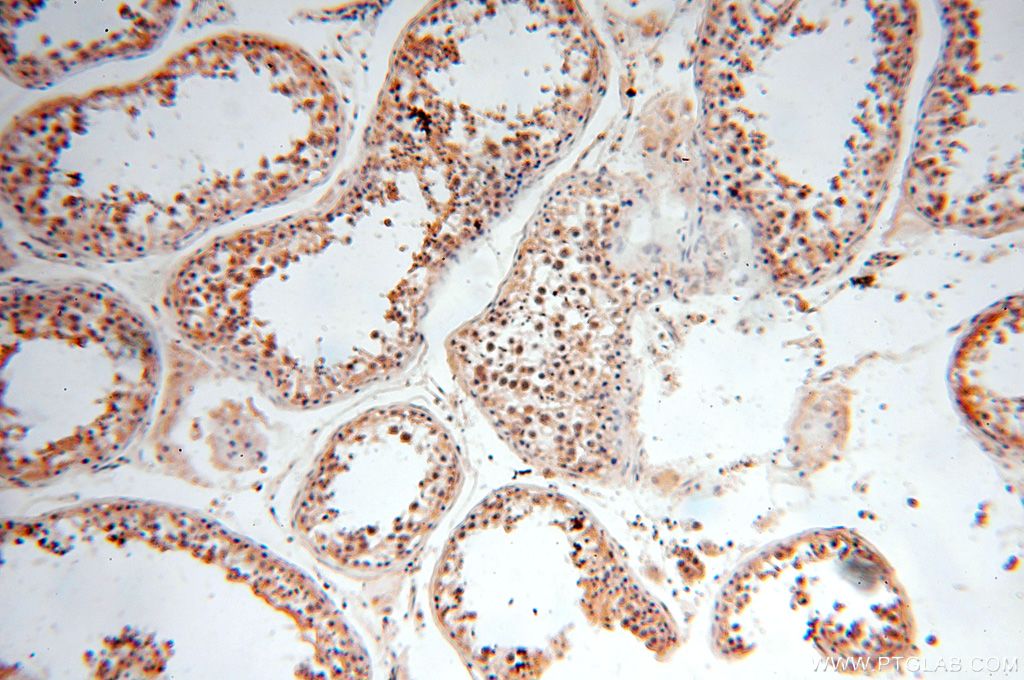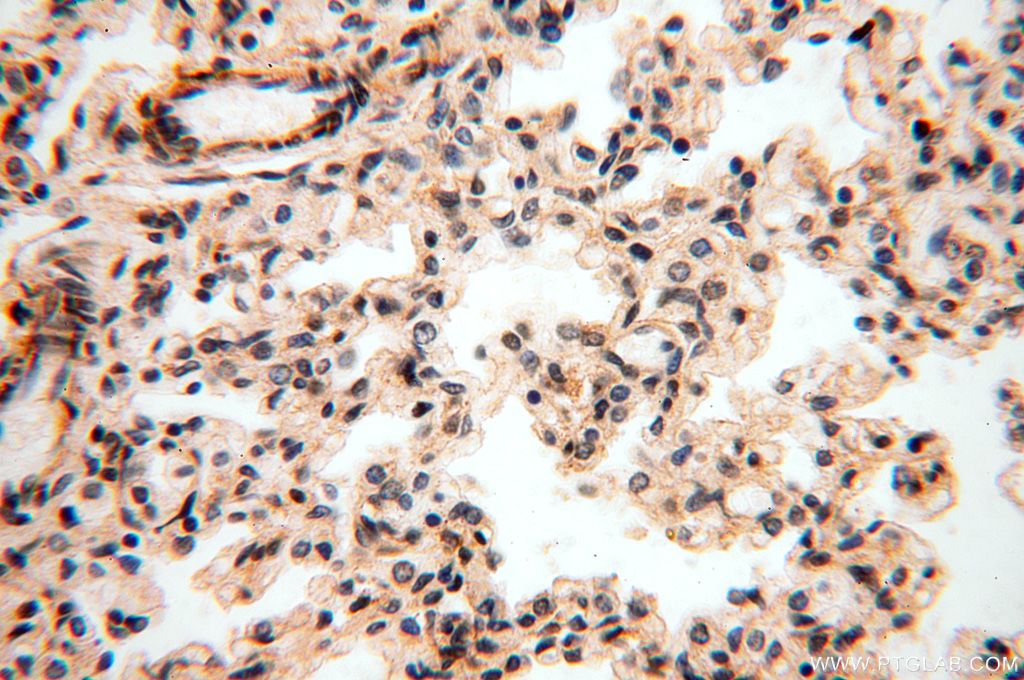- Phare
- Validé par KD/KO
Anticorps Polyclonal de lapin anti-ANTXR2
ANTXR2 Polyclonal Antibody for WB, IP, IHC, ELISA
Hôte / Isotype
Lapin / IgG
Réactivité testée
Humain
Applications
WB, IHC, IP, CoIP, ELISA
Conjugaison
Non conjugué
N° de cat : 16723-1-AP
Synonymes
Galerie de données de validation
Applications testées
| Résultats positifs en WB | cellules HEK-293, cellules PC-3 |
| Résultats positifs en IP | cellules HEK-293 |
| Résultats positifs en IHC | tissu ovarien humain, tissu placentaire humain, tissu pulmonaire humain, tissu rénal humain, tissu testiculaire humain il est suggéré de démasquer l'antigène avec un tampon de TE buffer pH 9.0; (*) À défaut, 'le démasquage de l'antigène peut être 'effectué avec un tampon citrate pH 6,0. |
Dilution recommandée
| Application | Dilution |
|---|---|
| Western Blot (WB) | WB : 1:500-1:1000 |
| Immunoprécipitation (IP) | IP : 0.5-4.0 ug for 1.0-3.0 mg of total protein lysate |
| Immunohistochimie (IHC) | IHC : 1:50-1:500 |
| It is recommended that this reagent should be titrated in each testing system to obtain optimal results. | |
| Sample-dependent, check data in validation data gallery | |
Applications publiées
| KD/KO | See 1 publications below |
| WB | See 6 publications below |
| IHC | See 4 publications below |
| IP | See 1 publications below |
| CoIP | See 1 publications below |
Informations sur le produit
16723-1-AP cible ANTXR2 dans les applications de WB, IHC, IP, CoIP, ELISA et montre une réactivité avec des échantillons Humain
| Réactivité | Humain |
| Réactivité citée | Humain |
| Hôte / Isotype | Lapin / IgG |
| Clonalité | Polyclonal |
| Type | Anticorps |
| Immunogène | ANTXR2 Protéine recombinante Ag10162 |
| Nom complet | anthrax toxin receptor 2 |
| Masse moléculaire calculée | 54 kDa |
| Poids moléculaire observé | 55 kDa |
| Numéro d’acquisition GenBank | BC107876 |
| Symbole du gène | ANTXR2 |
| Identification du gène (NCBI) | 118429 |
| Conjugaison | Non conjugué |
| Forme | Liquide |
| Méthode de purification | Purification par affinité contre l'antigène |
| Tampon de stockage | PBS with 0.02% sodium azide and 50% glycerol |
| Conditions de stockage | Stocker à -20°C. Stable pendant un an après l'expédition. L'aliquotage n'est pas nécessaire pour le stockage à -20oC Les 20ul contiennent 0,1% de BSA. |
Informations générales
ANTXR2 (anthrax toxin receptor 2), also known as CMG2 (capillary morphogenesis gene 2 protein) is a transmembrane protein that is induced during capillary morphogenesis. It contains a vWA domain that shows strong binding to laminin and collagen IV, suggesting that this protein plays a role in basement membrane matrix assembly and endothelial cell morphogenesis (PMID: 11683410; 14508707). Like its paralog TEM8 (ANTXR1), ANTXR2 also functions as a receptor for anthrax toxin. Mutations in ANTXR2 result in the allelic disorders juvenile hyaline fibromatosis and infantile systemic hyalinosis (PMID: 14508707; 12973667; 22383261).
Protocole
| Product Specific Protocols | |
|---|---|
| WB protocol for ANTXR2 antibody 16723-1-AP | Download protocol |
| IHC protocol for ANTXR2 antibody 16723-1-AP | Download protocol |
| IP protocol for ANTXR2 antibody 16723-1-AP | Download protocol |
| Standard Protocols | |
|---|---|
| Click here to view our Standard Protocols |
Publications
| Species | Application | Title |
|---|---|---|
Angiogenesis Capillary morphogenesis gene 2 (CMG2) mediates growth factor-induced angiogenesis by regulating endothelial cell chemotaxis.
| ||
Oncogene Capillary morphogenesis gene 2 maintains gastric cancer stem-like cell phenotype by activating a Wnt/β-catenin pathway. | ||
J Pathol Capillary morphogenesis protein 2 is a novel prognostic biomarker and plays oncogenic roles in glioma. | ||
FASEB J Genetic deletion of CMG2 exacerbates systemic-to-pulmonary shunt-induced pulmonary arterial hypertension. | ||
Reprod Domest Anim Screening for reproductive biomarkers in Bactrian camel via iTRAQ analysis of proteomes. | ||
Proc Natl Acad Sci U S A Anthrax toxin requires ZDHHC5-mediated palmitoylation of its surface-processing host enzymes. |
